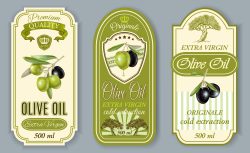Understanding Olive Oil Labels: How to Decode the True Quality of Your Olive Oil
 Understanding Olive Oil Labels: How to Decode the True Quality of Your Olive Oil
Understanding Olive Oil Labels: How to Decode the True Quality of Your Olive Oil
Olive oil is one of the most beloved ingredients in the world, and it’s not difficult to see why. It’s versatile, healthy, and has a great taste. However, understanding olive oil labels can be incredibly confusing, and finding a quality product can be a challenge. In this article, we will cover some key tips and tricks that will help you decode the true quality of olive oil labels.
Understanding the Quality of Olive Oil
The first thing you need to understand is how olive oil is classified. Olive oil is divided into three categories – extra virgin, virgin, and pure. When it comes to quality, extra virgin olive oil is the highest grade, followed by virgin olive oil, and pure olive oil. But what are the differences between these grades, and how can you tell a quality olive oil label from a misleading one?
Extra Virgin Olive Oil
Extra virgin olive oil (EVOO) is the highest-quality and most expensive variety of olive oil. It’s produced by mechanical cold-pressing of the first olives harvested from the tree, and no chemicals or solvents are used during the process. To meet the ‘extra virgin’ label, foreign oils are also required to maintain a level of oleic acid below 0.8%, while Spanish oils are required to maintain a level below 0.7%. Additionally, EVOO must pass a sensory evaluation to prove that it has the fruitiest flavor and aromas while being void of defects such as fusty or muddy flavors.
Virgin Olive Oil
Virgin olive oil is the second-highest quality category, but the difference between virgin and extra virgin olive oil is relatively narrow. It also should have a maximum of 2% acidity and is usually obtained by a simpler, less arduous process with less rigorous requirements than EVOO. Virgin olive oil is also cold-pressed, but they can have a level of oleic acid between 0.8 – 2.0%.
Pure Olive Oil
The lowest grade of olive oil is pure olive oil, which is usually a blend of cold-pressed virgin olive oil and refined oil. Pure olive oil is chemically extracted and treated, which gives it a much milder flavor profile, and it lacks the nutritional content of higher-quality oil.
What to Look for in an Olive Oil Label
1. Production Date
The ‘best by’ date on an olive oil bottle is often used as a point of reference when choosing olive oil, but a production date holds more accurate information about the state of the oil. Generally, olive oil is best consumed within two years of production.
2. Harvest Date
A harvest date tells you when the olives were picked, and an oil producer should be able to provide this information. Generally, the earlier in the harvest, the better the oil as the olives are in their prime.
3. Origin
The origin of an olive oil is important information. Countries such as Italy, Spain, and Greece produce some of the best olive oils globally, so it’s important to look for a specific origin, instead of a broad “from Europe” label.
4. Cold-Pressed
The term ‘cold-pressed’ is commonly used to describe high-quality olive oils. It’s important to note that this term is not a regulated one in the U.S., however, a reputable oil producer will still include it as a selling point.
5. Polyphenol Count
Polyphenols are natural antioxidants present in olive oil and provide health benefits. Increasingly, producers are including information about the amount of polyphenols in their oil on the label to differentiate their products.
6. Quality Seals
Other items to look for are certifications on the label or bottle, such as DO (Denominación de Origen) for Spanish olive oils or California Olive Oil Council (COOC) for oils produced in California. While not foolproof indicators of quality, these certifications demonstrate an additional level of commitment to producing quality olive oil.
Conclusion
Understanding olive oil labels is crucial to finding a quality olive oil. Always look for production and harvest dates, origin, cold-pressed, polyphenol count, and quality seals on the label. Additionally, always purchase olive oil from a reputable and reliable producer or seller. With this knowledge, you should have everything you need to find the perfect olive oil to elevate your cooking game. Enjoy!
Got questions? Let us help! Contact us today to learn more about what we can do for you!
Categorized in: Labeling

 Understanding Olive Oil Labels: How to Decode the True Quality of Your Olive Oil
Understanding Olive Oil Labels: How to Decode the True Quality of Your Olive Oil